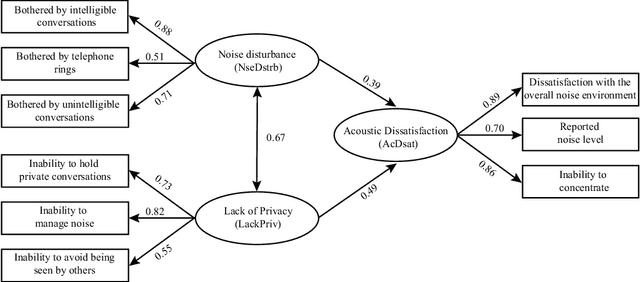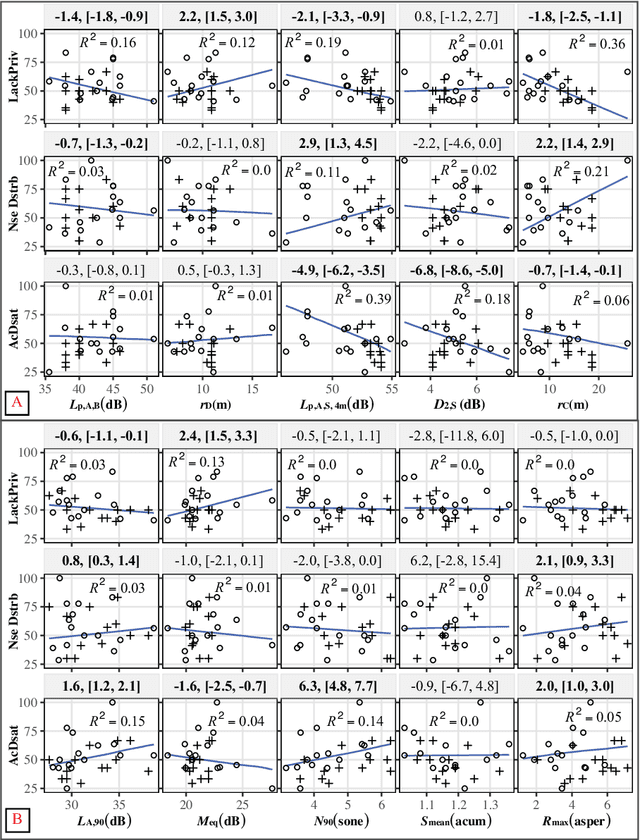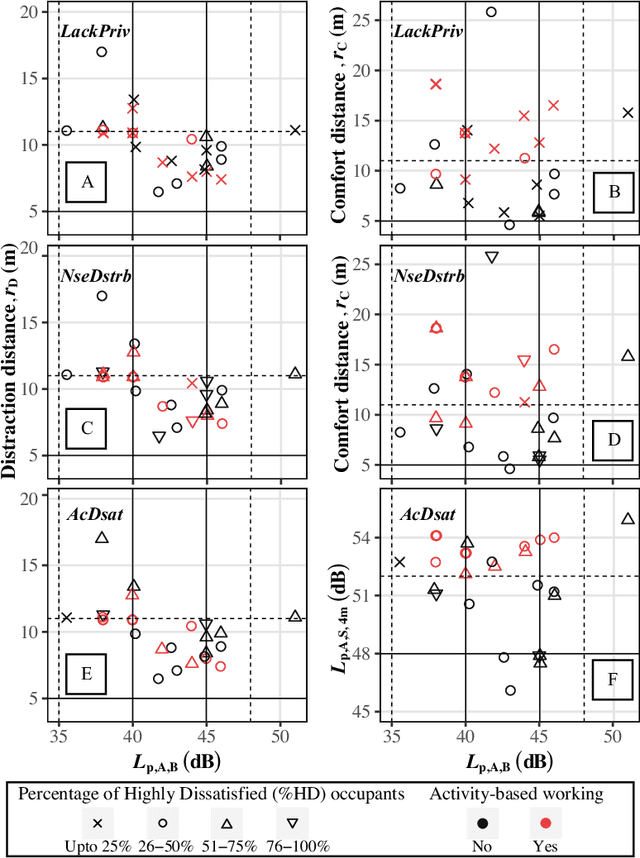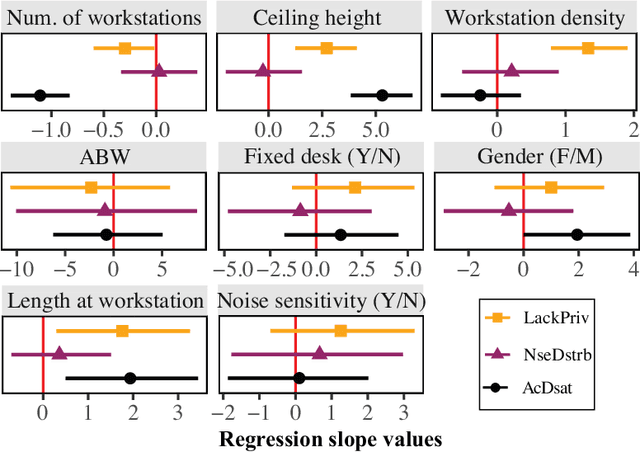Valtteri Hongisto
Noise disturbance and lack of privacy: Modeling acoustic dissatisfaction in open-plan offices
Jan 27, 2025



Abstract:Open-plan offices are well-known to be adversely affected by acoustic issues. This study aims to model acoustic dissatisfaction using measurements of room acoustics, sound environment during occupancy, and occupant surveys (n = 349) in 28 offices representing a diverse range of workplace parameters. As latent factors, the contribution of $\textit{lack of privacy}$ (LackPriv) was 25% higher than $\textit{noise disturbance}$ (NseDstrb) in predicting $\textit{acoustic dissatisfaction}$ (AcDsat). Room acoustic metrics based on sound pressure level (SPL) decay of speech ($L_{\text{p,A,s,4m}}$ and $r_{\text{C}}$) were better in predicting these factors than distraction distance ($r_{\text{D}}$) based on speech transmission index. This contradicts previous findings, and the trends for SPL-based metrics in predicting AcDsat and LackPriv go against expectations based on ISO 3382-3. For sound during occupation, $L_{\text{A,90}}$ and psychoacoustic loudness ($N_{\text{90}}$) predicted AcDsat, and a SPL fluctuation metric ($M_{\text{A,eq}}$) predicted LackPriv. However, these metrics were weaker predictors than ISO 3382-3 metrics. Medium-sized offices exhibited higher dissatisfaction than larger ($\geq$50 occupants) offices. Dissatisfaction varied substantially across parameters including ceiling heights, number of workstations, and years of work, but not between offices with fixed seating compared to more flexible and activity-based working configurations. Overall, these findings highlight the complexities in characterizing occupants' perceptions using instrumental acoustic measurements.
 Add to Chrome
Add to Chrome Add to Firefox
Add to Firefox Add to Edge
Add to Edge